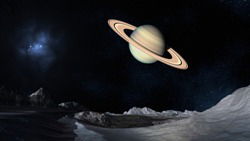
The scorecard has been impressive:
- About 20 variable stars have been discovered. This star whose brightness changes, either irregularly or regularly.
- A stellar outburst has been recorded
- Two near-Earth asteroids have been detected and measured.
“We were the first and only university to capture the stellar outburst – the size of about 10 million H-bombs by a star in the Orion Constellation back around on 2010,” said Ron Kaitchuck, director of the Charles W. Brown Planetarium and a professor of physics and astronomy. “But, it took until last summer when we ran the data through our software that it jumped out. It was a huge and fast event. If it would have happened on our Sun, we would be here today. It would have blown off our atmosphere.
“More study has to be done to study the temperatures and energy levels of this particular burst,” he said. “We have some more work to do.”
Sky watching is being done at a very high level thanks to the university’s membership in the Southeastern Association for Research in Astronomy (SARA), whose 13 institutions operate telescopes in Arizona, the Canary Islands, and Chile. These telescopes span 7 time zones and give access to the southern hemisphere sky that is not visible from Indiana.
SARA astronomers have been using these sites for research ranging from asteroids to quasars, and students use them in classrooms and for public outreach events.
“Over the years, we have made many advancements in software that allows us to investigate photos taken at the observatories,” Kaitchuck said. “At one point, we would take a photo of a star field and could review only 6 percent of the stars at a time. Now, we can review 100 percent of the stars, which is a major jump in our efforts.”
Through its membership in SARA, Ball State has 55 nights annually that students and faculty can use for instruction and research.
Through research projects, students gain valuable professional skills and experience working with modern technical facilities and equipment. These include the College of Science and Humanities supercomputing cluster and a new 20-inch diameter telescope in the observatory on campus.
More information about the access to telescopes worldwide is here.
Get more information about the Charles W. Brown Planetarium here.



